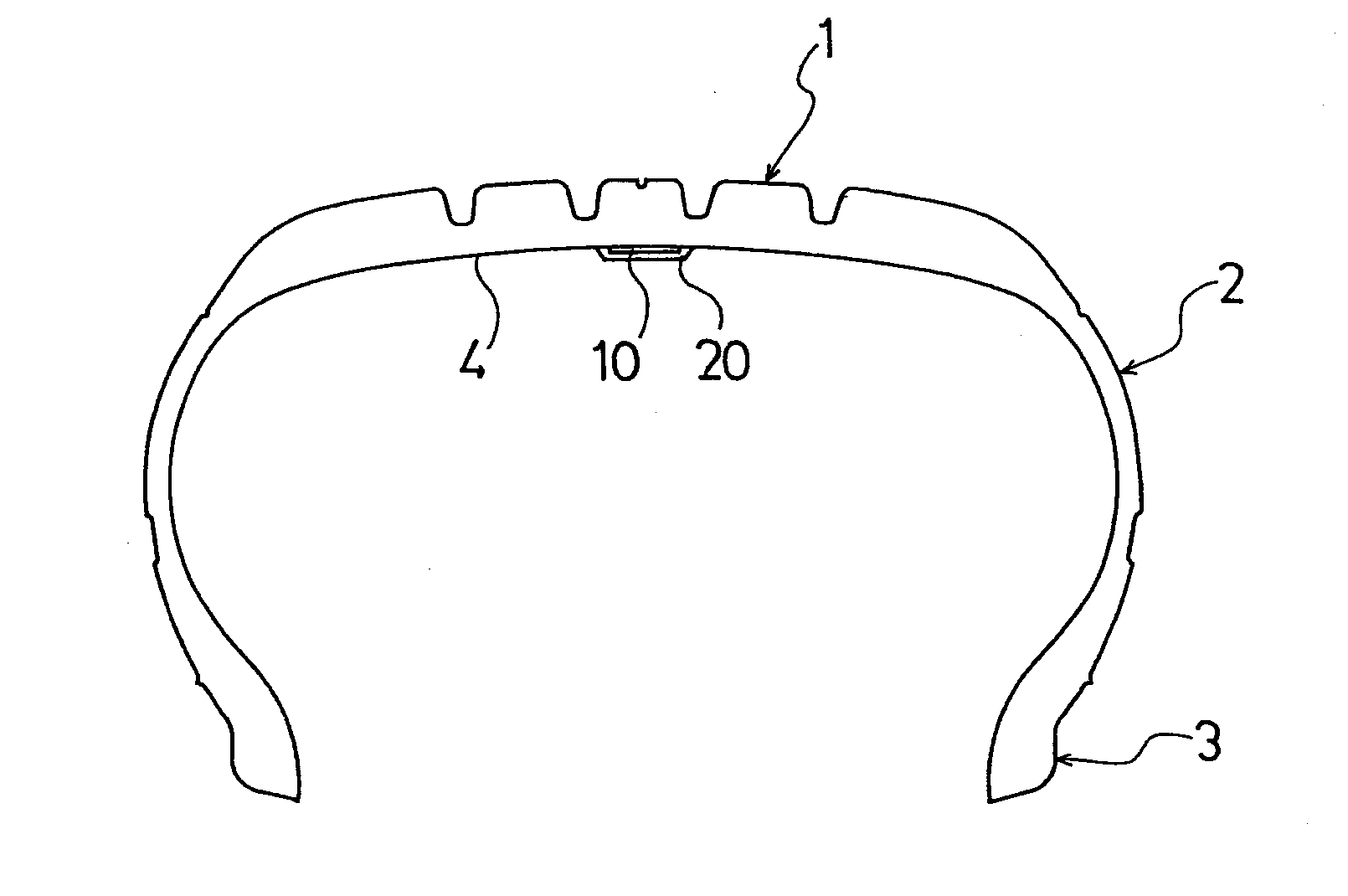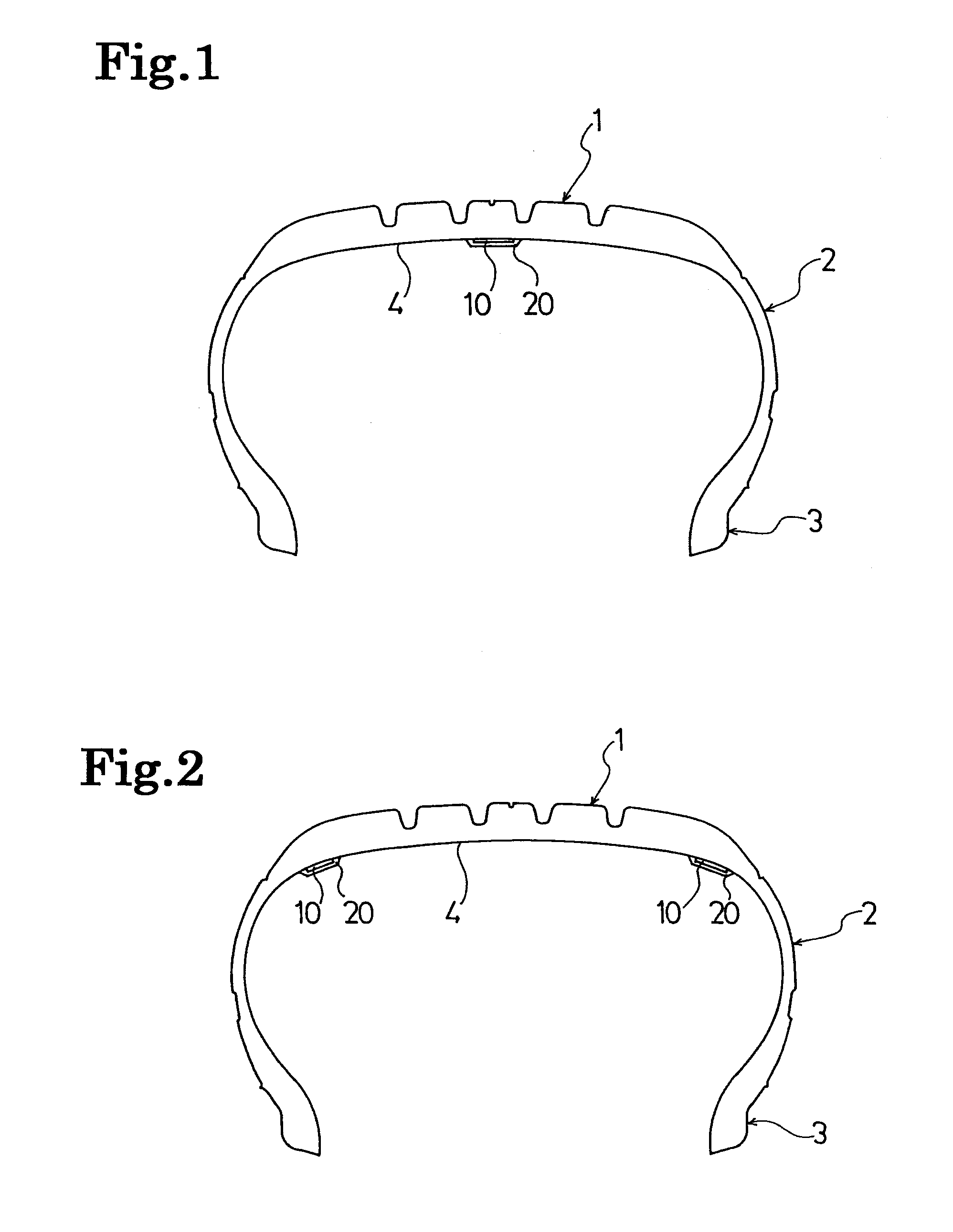Pneumatic tire with surface fastener and method of producing the same
a technology of pneumatic tires and surface fasteners, which is applied in the field of pneumatic tires, can solve the problems of inability to attach and sometimes crush the engagement element of the surface fastener, and achieve the effects of preventing curing failure, facilitating the pasting operation of the surface fastener, and increasing the protection effect of the protective rubber layer
- Summary
- Abstract
- Description
- Claims
- Application Information
AI Technical Summary
Benefits of technology
Problems solved by technology
Method used
Image
Examples
example
[0057]Tires each having a surface fastener on the tire inner surface and having a tire size of 215 / 60R16 were manufactured in various manufacturing conditions. In Example, an uncured rubber was filled between engagement elements of the surface fastener to form a protective rubber layer in which the engagement elements were buried. Then, the surface fastener having the protective rubber layer was placed on an uncured tire in a manner that a surface of the surface fastener opposite a surface having the engagement elements was in intimate contact with the tire inner surface. After that, the uncured tire having the surface fastener was cured by a curing machine equipped with a bladder. The surface fastener was a surface fastener having anchor elements on the surface opposite the surface having the engagement elements. When the surface fastener was placed on the uncured tire, the anchor elements penetrated into the tire inner surface. In Conventional Example, a pneumatic tire with a surf...
PUM
| Property | Measurement | Unit |
|---|---|---|
| height | aaaaa | aaaaa |
| height | aaaaa | aaaaa |
| width | aaaaa | aaaaa |
Abstract
Description
Claims
Application Information
 Login to View More
Login to View More - R&D
- Intellectual Property
- Life Sciences
- Materials
- Tech Scout
- Unparalleled Data Quality
- Higher Quality Content
- 60% Fewer Hallucinations
Browse by: Latest US Patents, China's latest patents, Technical Efficacy Thesaurus, Application Domain, Technology Topic, Popular Technical Reports.
© 2025 PatSnap. All rights reserved.Legal|Privacy policy|Modern Slavery Act Transparency Statement|Sitemap|About US| Contact US: help@patsnap.com



